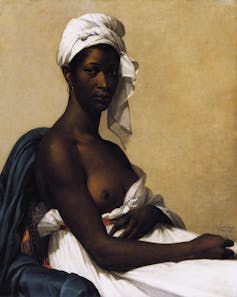Source: The Conversation – UK – By Tim Lamont, Research Fellow, Marine Biology, Lancaster University
Why do people care about coral reefs? Why does their damage cause such concern and outrage? What drives people to go to great lengths to protect and restore them?
Of course, it’s partly because of their ecological importance and economic value – but it’s also because they are beautiful. Healthy coral reefs are among the most visually spectacular ecosystems on the planet – and this beauty is far from superficial. It underpins cultural heritage value, supports tourism industries, encourages ocean stewardship and deepens people’s emotional connections to the sea.
But how can such beauty be measured? And when it is destroyed, can it be rebuilt?
Get your news from actual experts, straight to your inbox. Sign up to our daily newsletter to receive all The Conversation UK’s latest coverage of news and research, from politics and business to the arts and sciences.
Traditionally, many coral reef monitoring and restoration programmes overlook their beauty, considering it too subjective to measure. And as a team of scientists, that frustrated us. We knew that to most effectively draw on this key motivator for coral conservation, we had to be able to measure beauty.
In some ways, it’s an impossible task. But our new study grapples with this challenge, delivering a way of quantifying the aesthetic value of a coral reef, as well as measuring its recovery when previously damaged reefs are restored.
Our international team of marine scientists has been working at the Mars coral restoration programme (the largest project of its kind) in central Indonesia. Here, local communities and international businesses have collaborated for over a decade, rebuilding reefs that were once decimated by dynamite fishing. This illegal fishing method uses explosives to stun and kill fish for easy collection, while shattering coral reefs into rubble – wiping out entire reef communities in seconds.
This Indonesian project has already successfully regrown coral reefs. But we wanted to explore whether this programme had been able to recreate the visual appeal of a natural reef ecosystem.
We took standardised seabed photos using settings that automatically adjust white balance and colour to compensate for underwater light conditions. This enabled us to capture accurate colours under consistent shallow-water conditions across healthy, degraded and restored reef sites.
Then we conducted online surveys with more than 3,000 participants, asking them to compare pairs of photographs and choose which they found more beautiful – enabling us to derive a rating for each photograph. Our results showed that people from very different backgrounds consistently shared similar opinions on which reefs were beautiful.
Whether respondents were young or old, from countries with coral reefs or without, or had different levels of education and familiarity with the ocean, they tended to favour images with high coral cover, vibrant colours and complex coral structures. This suggests there is a shared human appreciation for the beauty of thriving reefs.
We also used these ratings to train a machine-learning algorithm based on AI to reliably predict people’s visual preferences for photographs of different coral habitats.
The results of people’s survey responses and the machine learning algorithm were the same. Images of restored reefs were consistently rated just as beautiful as those of healthy reefs, and far more aesthetically pleasing than degraded reefs. This is encouraging, and important. It shows that efforts to rebuild these charismatic ecosystems can recreate the beauty that makes them so highly valued.
Tracking recovery
We found that beauty was strongly linked to the number of colours present in the picture, the proportion of the image taken up by living coral, and the complexity of shapes exhibited by the corals. Meanwhile, images showing grey rubble fields of dead corals with little life were consistently rated lowest.
Our results suggest that promoting a range of different coral colours and shapes will not only help marine life, but also restore the visual, cultural and tourism value of thriving coral reefs. Reef restoration experts can achieve this by choosing donor corals – healthy corals transplanted to degraded sites to aid recovery – to add colour and variety to the reefs they plant.
This also means that coral reef recovery can be tracked using simple photo-based monitoring, like that used in our study.
Coral reefs need long-term care to help them survive, thrive and maintain their beauty and ecological function. To ensure that initial restoration gains are not quickly lost, such efforts need to be paired with ongoing monitoring and maintenance. Any tourism development around restored reefs also needs to be managed carefully and sustainably.
Restoration and sustainable tourism practices can help protect and sustain the ecological and social benefits of beautiful, healthy reefs. Ultimately, restoring beautiful reefs will be crucial for communities that rely on marine tourism, and for inspiring people to care for the ocean.
Don’t have time to read about climate change as much as you’d like?
Get a weekly roundup in your inbox instead. Every Wednesday, The Conversation’s environment editor writes Imagine, a short email that goes a little deeper into just one climate issue. Join the 45,000+ readers who’ve subscribed so far.
![]()
Tim Lamont receives funding from the Royal Commission of 1851 and the Fisheries Society of the British Isles.
Gita Alisa receives funding from Friends of Lancaster University in America and Sheba Hope Advocate Program.
Tries Blandine Razak receives funding from the Pew Charitable Trust and the Fisheries Society of the British Isles.
– ref. The beauty of coral reefs is key to their survival – so we came up with a way to measure it – https://theconversation.com/the-beauty-of-coral-reefs-is-key-to-their-survival-so-we-came-up-with-a-way-to-measure-it-261013











